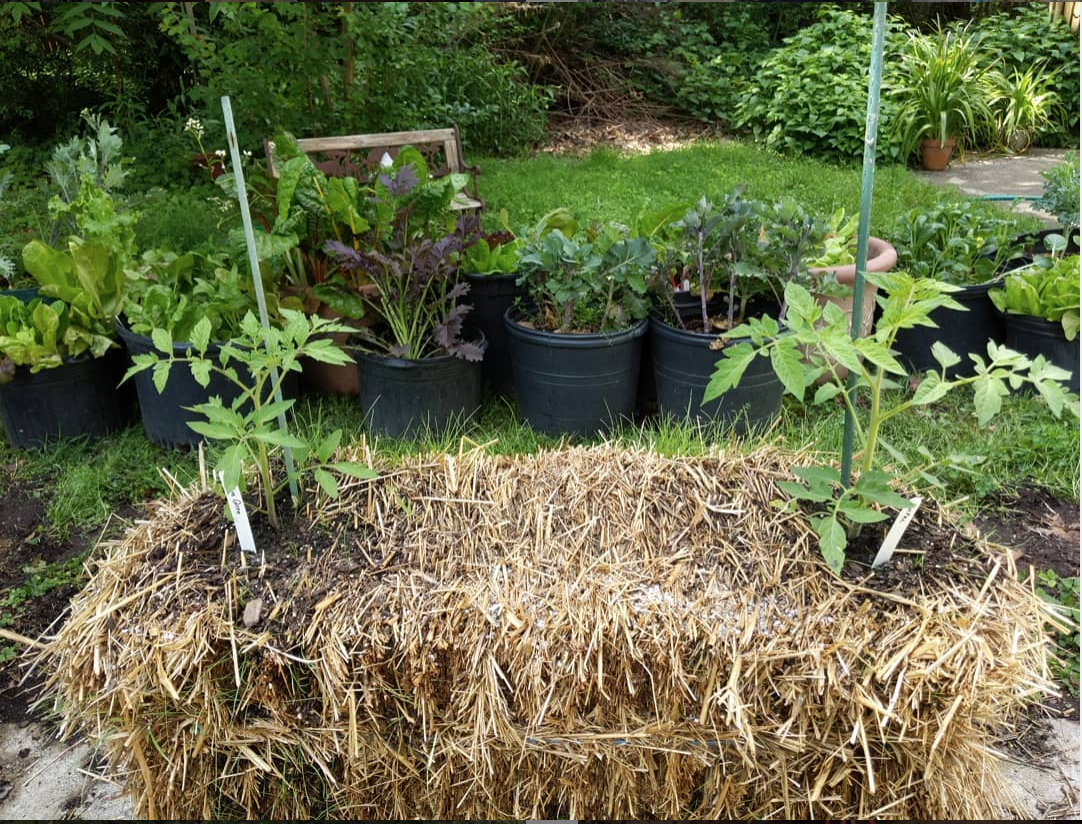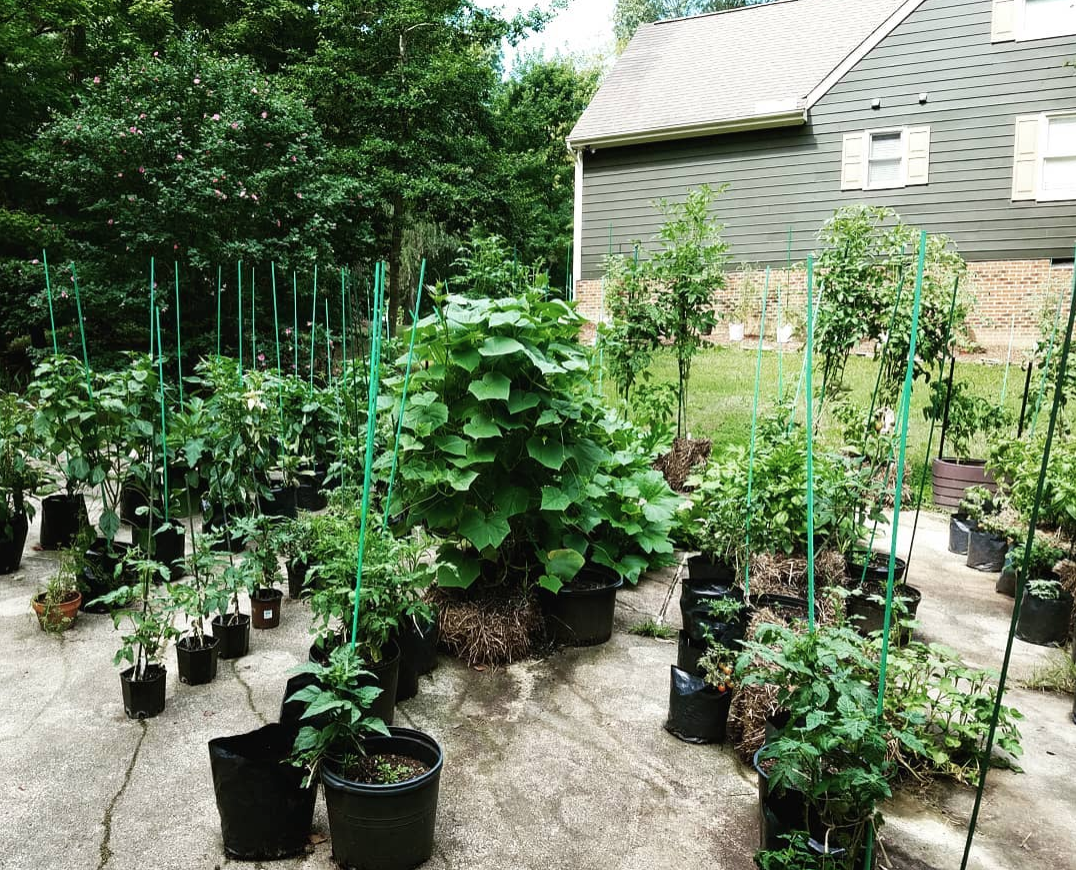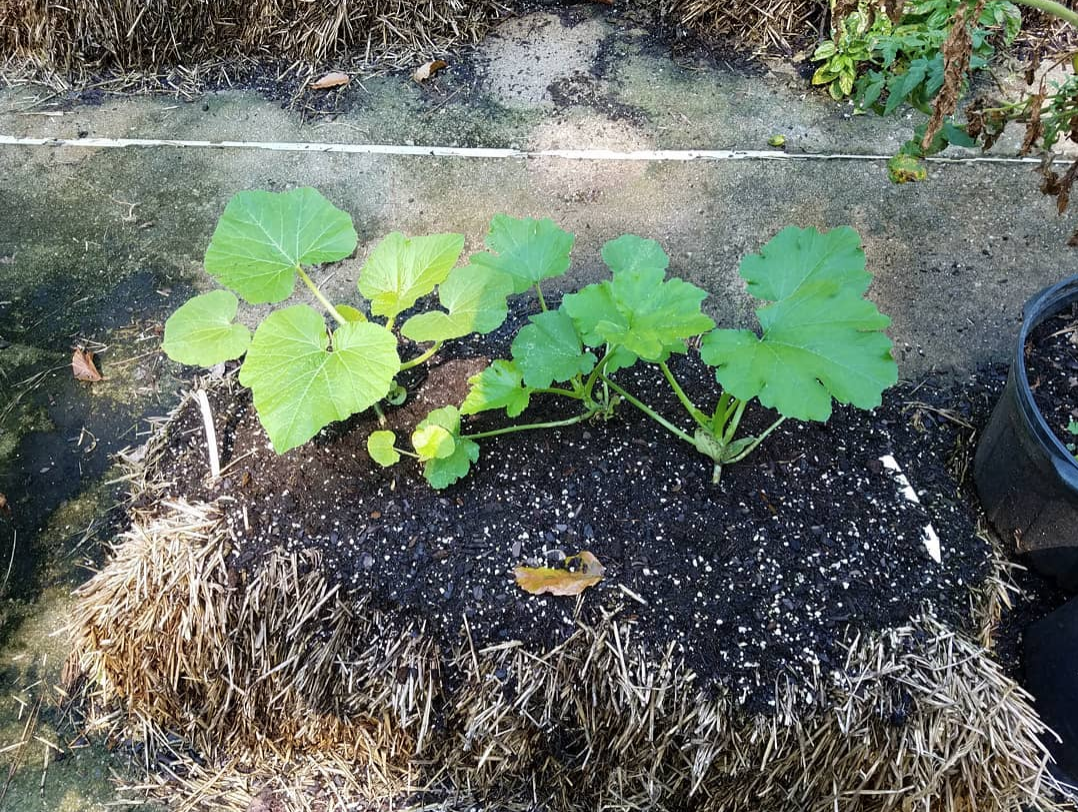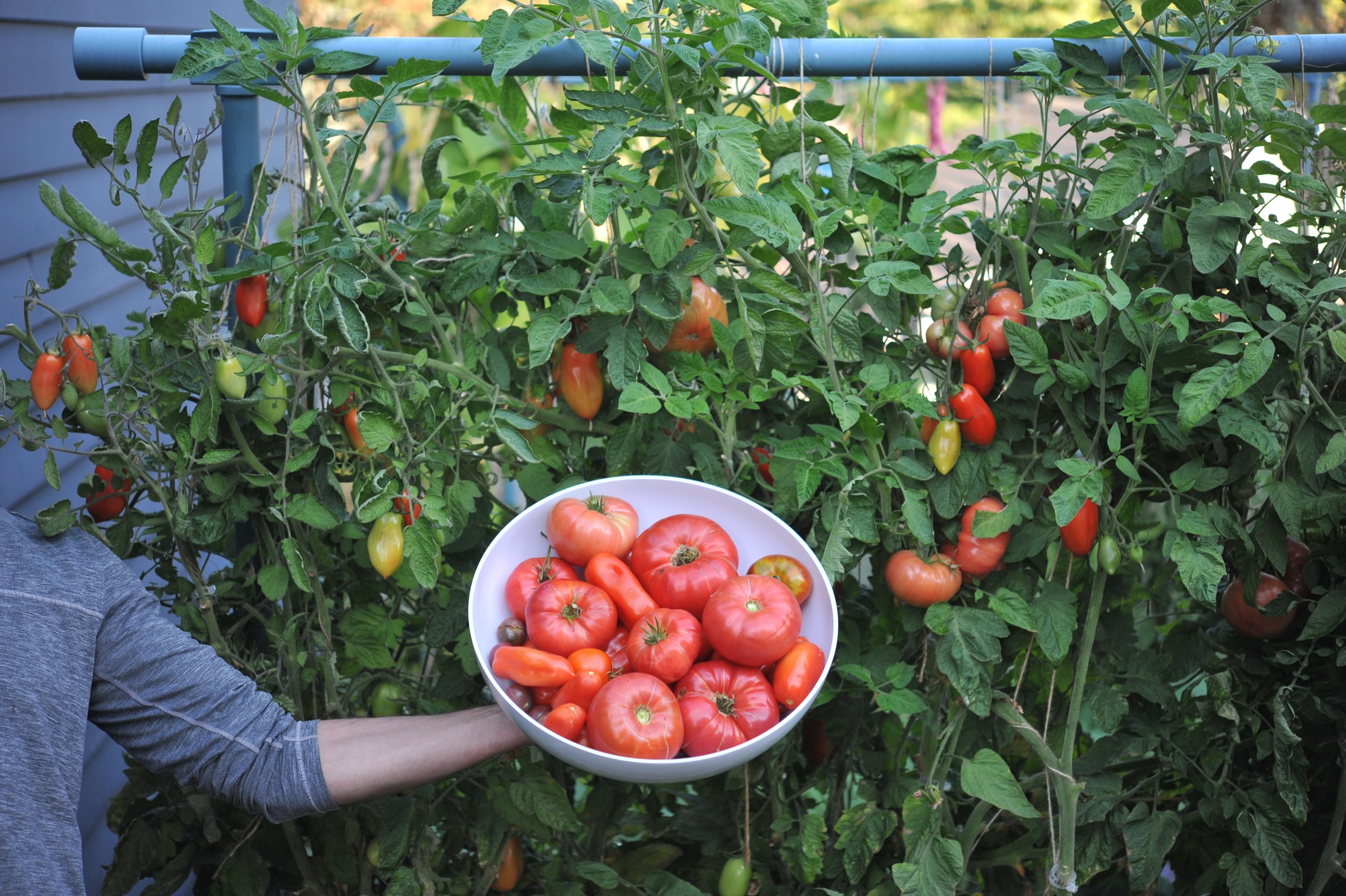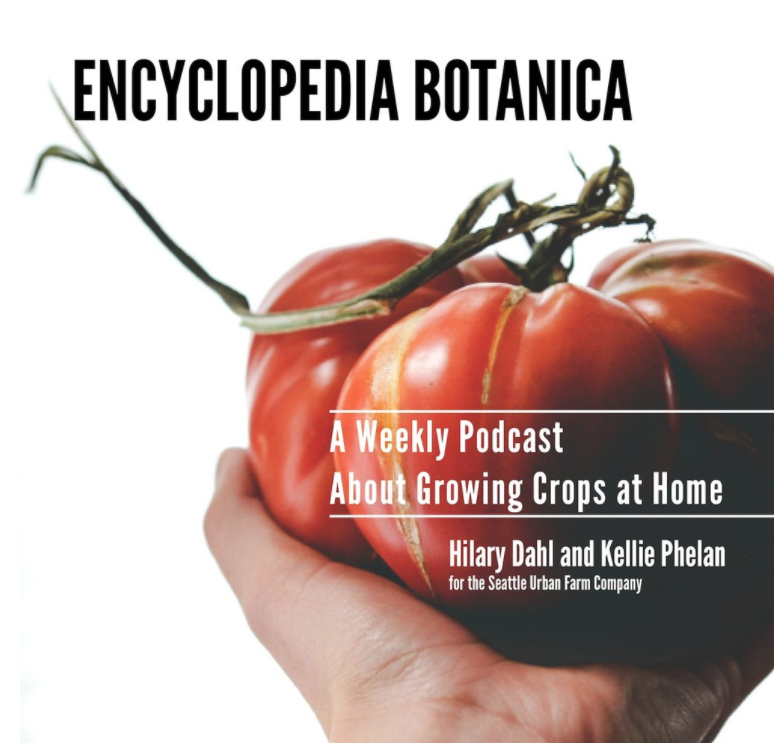Turns out gardening in straw bales might be the least expensive and most effective way to create a season-long container garden! Hilary and Craig LeHoullier discuss what a straw bale garden is and how to set one up!
HOW TO LISTEN:
Listen right now in your browser by clicking above.
Subscribe in iTunes (or your favorite podcast player) to have our podcasts sent directly to your device.
SHOW NOTES and TERMS:
Straw Bale Gardening
What it is: The practice of using bales of straw as your container and growing medium
How it works: The straw inside the bale decomposes over the course of the growing season, creating a productive, warm, moist and nutrient rich growing environment for plants.
The benefits:
Straw bales function a lot like a container garden, so you can place your bales anywhere on your site- ideally in the sunniest spot with the best water access!
No digging or filling of containers!
Bales drain well.
High bales = easy harvesting!
Also like in more traditional container garden, the bales lift your plants up out of the ground and.
What you need to build a straw bale garden:
Straw bales
Water
Plants
Nitrogen rich fertilizer - optional, but helpful in speeding up the breakdown of the straw to create a good growing environment for your plants.
Balanced fertilizer to use at planting time.
How far in advance do you need to condition your bales?:
2 weeks if using a nitrogen accelerant
4-6 weeks if just using water
What to do with the bale at the end of the season: If your bale was home to healthy plants, cut the string of your bales and spread them around your garden as mulch or place them in a pile out of the way. The straw will continue to break down over the winter and eventually become compost that you can use the following season!
For step by step instructions on building and caring for your straw bale garden, check out Craigs book: Growing Vegetables in Straw Bales
The Dwarf Tomato Project
About the project: [From Craigs website] “Dwarf varieties, prior to this project, are relatively rare, unknown and undeveloped as a group. Appearing quite distinct in all growth phases – from seeding to mature plant – they behave as if they are very compact indeterminate varieties in the manner that they fruit, persevere until frost, and exhibit flavors that in many cases can approach the best of the indeterminate varieties, due to similar foliage to fruit ratios. There is some variation in height throughout the new dwarf varieties – some appearing to be more “determinate” than others. As young seedlings they are half the size of indeterminate or determinate seedlings right from the start. The central growing stem is particularly stout, and the foliage, which can be either regular or potato leaf, tends to be a darker bluish green and have a puckered, wrinkled characteristic that is known as “rugose”. Though the yields of dwarfs will never approach that of indeterminate varieties, the ability to plant them much more closely or grow in as little as 5 gallon pots are adequate compensation. What we are producing in this project is a color, size and shape range that will allow those who are space constrained to experience the nature of many of the well known heirloom types, but in a growth habit that is much easier to manage. We are excited about what we are creating, and are anxious, as well as finally ready, to share the very best of these with gardeners. We invite feedback – there is always a chance that you will not get exactly what is described or expected, and all of these, while quite stable, are still in a way works in progress. We hope to have created a set of non-hybrid varieties that will make gardening interesting for you, as well as provide what will be considered valuable heirloom varieties at some point in the distant future!”
Find our more about this project and reach out to Craig about joining in on the fun here.
Photos from Craig’s Straw Bale Garden
Resources mentioned in this episode:
Like what you hear? Please share our podcast with a friend. Subscribe on iTunes or your favorite podcast player so you never miss a beat. And we'd really appreciate you showing us some love by leaving a rating and review on iTunes.
Have a topic you'd like see us dig in to? Leave us a note in the comment section below or #EBpodcast on Instagram and Twitter!
This Week’s Co-host:
CRAIG LEHOULLIER aka. NC Tomatoman aka “The Fellow Who Named Cherokee Purple in 1990” is the author of the books Epic Tomatoes or Growing Vegetables in Straw Bales, the co-host of Tomatopalooza, a co-leader of the Dwarf Tomato Breeding Project, or just the odd person with a garden where the driveway used to be. He’s the tomato nut with a website, a blog, a newsletter (on occasion), and a huge tomato and pepper and eggplant collection.
Website: www.craiglehoullier.com/
Instagram: @nctomatoman
About the Host:
Hello, I’m Hilary Dahl. Outside of this podcast, my job is to help beginning and experienced growers create beautiful and productive gardens. I have the unique experience of working in on a wide range of projects, from small backyard garden plots to multi-acre vegetable farms. I also work in my own garden every day when I get home. This podcast is an opportunity to discuss seasonal garden topics and share the the joy of growing your own food.


